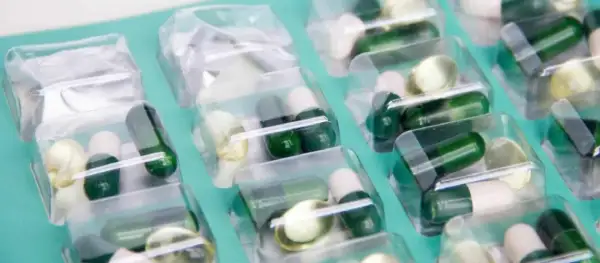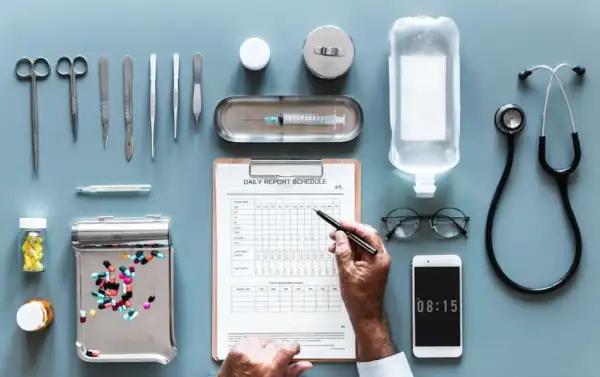Blog
The Rise of Chronic Mold Toxicity

The Rise of Chronic Mold Toxicity
For millions of years, mold has been found all over the earth. Even though a little mold is always found in the air we breathe and on many surfaces, it often doesn’t cause people any harm or discomfort.
However, chronic mold toxicity is a condition resulting from exposure to indoor environments with poor air quality caused by a buildup of mold. While these molds are not themselves toxic, certain molds are toxigenic, meaning they can produce mycotoxins.
There are approximately 16 species of mold that are toxic to humans. If these mycotoxins build up and are trapped in an indoor environment (whether it be a residential or commercial space), exposure can lead to a variety of health issues. For example, studies in 2017 showed a direct link between mold exposure and various forms of dementia, including Alzheimer’s disease.
How prevalent is mold toxicity?
Doctors estimate that over 81 million Americans have a gene that makes them more susceptible to mold sensitivities, resulting in upper-respiratory allergic reactions. That’s one in every four Americans unnecessarily suffering from chronic discomfort in their daily lives.
Even more troubling, experts estimate that millions in the U.S. suffer from mold toxicity without even knowing it. The traditional medical model frequently overlooks mold toxicity as a potential cause, leaving many people undiagnosed and without proper treatment plans.
What are the signs and symptoms of mold sensitivity and toxicity?
According to the Institute of Medicine (IOM), indoor exposure to mold itself causes upper respiratory tract symptoms such as coughing and wheezing. Most commonly, this exposure can lead to hay fever-like allergic symptoms: sneezing, throat irritation, stuffy or runny nose, and itchy or watering eyes.
Indoor mold exposure can also exacerbate asthma symptoms. For anyone with a weakened or dysfunctional immune system, exposure can lead to inflammation of the lungs from an allergic reaction (a.k.a., hypersensitivity pneumonitis).
If it turns out that a person is allergic to mold itself, exposure can be an even more significant health concern. Evidence also suggests a link between respiratory illnesses in otherwise healthy children and exposure to indoor mold.
However, exposure to mold-formed mycotoxins can cause much more severe health side effects than just the previously mentioned allergic symptoms. These symptoms include mental impairment, bleeding, internal organ damage, cancer, and even death.
Mold can also cause infections and make people more susceptible to them. For people who are elderly or have compromised immune systems, mold spores may become trapped inside the lungs, sinuses, skin, or digestive system. Once caught, they can grow there and cause infections resulting in a host of problems. In some cases, these infections can be life-threatening.
If you have been diagnosed for chronic Lyme disease and undergone treatment, mold toxicity could be a contributing factor. In fact, inflammation resulting from mold-related illnesses has been a contributing factor in one-half of all unresolved Lyme disease cases.
Other symptoms that could be markers for undiagnosed mold toxicity or sensitivities include Irritable Bowel Syndrome, muscle aches, weight gain, fatigue, headaches, nausea, anxiety, brain fog, and light or sound sensitivity.
Noticing and Preventing Indoor Mold
Among the roughly 16 toxigenic molds, the most notorious is a greenish-black species commonly called toxic black mold (a.k.a., Stachybotrys chartarum). Sometimes mold is ignored or mistaken for dirt. However, mold can vary widely in color, including hues such as orange, white, grey-brown, pink, and purple.
Another indication of a mold infestation is any noticeable issues with water or humidity. Perhaps you notice condensation on metal pipes or glass surfaces. You may see wallpaper peeling or paint cracking and bubbling in an area where mold has the potential to build up. Check your home’s history and look for any indications of past flooding.
While it’s good to keep an eye out for visible mold, harmful mold may be trapped in an area that isn’t even visible. In these cases, it’s essential to notice if you regularly experience any of the symptoms previously listed. One way to distinguish where the mold is located is if you see that symptoms regularly intensify while you’re at home or work and then dissipate after leaving that indoor environment.
You may also be able to smell mold, but this isn’t always going to be the case. If you do notice a strong smell in the air, it’s usually described as an unpleasant odor akin to rotten wood, wet socks or paper.
The easiest ways to prevent mold are to keep humidity levels low, ensure your home has proper ventilation, attend to leaks, address flood damage, and keep your home clean. Make sure humidity levels don’t exceed 50% throughout the day by using a dehumidifier. For ventilation, ensure your clothes dryer vents properly and use the exhaust fans in your kitchen and bathroom regularly. As an extra measure for keeping a clean home, use mold-killing products for cleaning your bathrooms. You may also want to consider opting for wood or tile flooring as an alternative to carpeting in bathrooms, basements, and other areas susceptible to a lot of moisture.
How do I know if I have mold toxicity?
There are a couple testing options for checking to see if you suffer from mold toxicity. Part of LIVV’s routine intake procedures involves conducting these tests to address such problems as soon as possible. In the case of mold toxicity, LIVV offers standard and specialty labs.
The standard lab is a blood test that measures how your immune system responds to mold. This is done by measuring the prevelance of specific antibodies (immunoglobulin E) in your bloodstream. For patients with more severe symptoms and concerns, a different blood test can be used to check for biotoxins resulting from mold exposure. A positive lab result can confirm the likelihood of mold poisoning.
What are some of the treatment options?
Removing mold from the indoor environment causing toxicity is an excellent first step to preventing and recovering from this condition. Many people may use decongestants and antihistamines to combat symptoms, but this really isn’t getting at the root cause of their problem. Using a range of treatments to improve one’s overall health is a less invasive and more effective solution to help your body defend itself over the long term:
Here are some immune-boosting treatments that may be appropriate for helping you overcome chronic mold toxicity or mold sensitivity:
- Ozone Therapy – This treatment introduces ozone (O3) into the body, producing a pro-oxidative effect that has the potential to eradicate pathogenic bacteria, viruses, cancer cells, and other harmful organisms. In essence, Ozone Therapy puts a light amount of stress on your body to boost its natural defense mechanisms. This carefully measured amount of oxidative stress creates an imbalance that disrupts malicious processes taking place in the body and aids in the regeneration of new, healthy ones.
- Immune – LIVV’s unique Immune formula combines vitamin C, selenium and Zinc to strengthen the body’s defensive mechanisms, promote optimal health, and boost resiliency.
- Vitamin C Infusion – This formula introduces high doses of Vitamin C directly into the bloodstream to optimize immune system and cellular functionality.
What should I do?
There are many other tests, formulas and treatments that may be more appropriate for your unique needs. If you suspect that you may be suffering from mold sensitivity or toxicity, the best first step is to schedule a complimentary consultation. All you have to do is click here and follow the prompts to book your free visit to the LIVV IV Lounge in San Diego.

